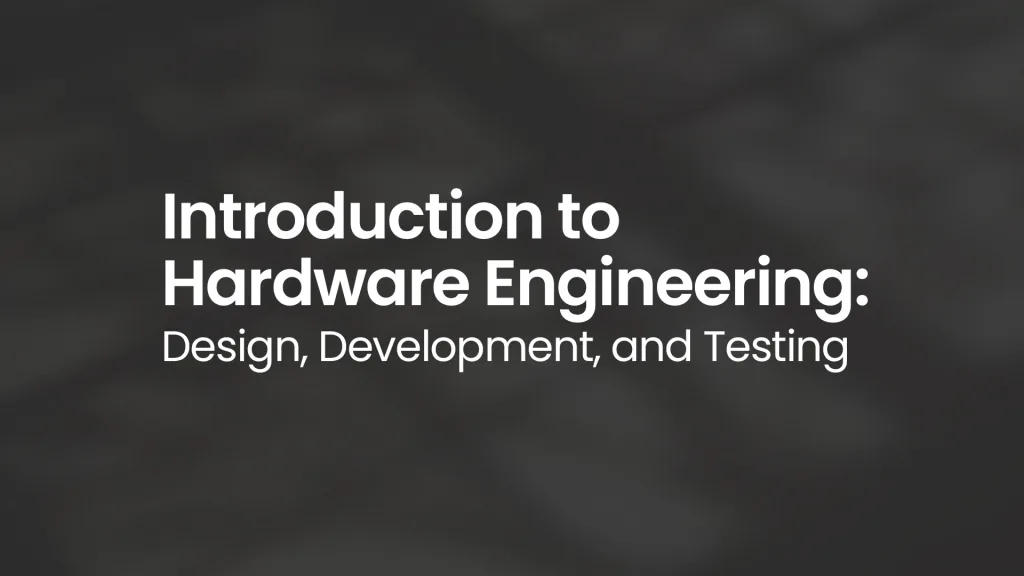In the ever-evolving world of technology and innovation, custom engineering services have emerged as a cornerstone for businesses looking to stay ahead of the curve. But what exactly does “custom engineering” entail? In simple terms, it’s about crafting tailor-made solutions that perfectly fit the unique needs of a business or project.
The importance of Customization in Engineering
Customization in engineering isn’t just a luxury; it’s a necessity in today’s competitive market. Whether developing a specific software, designing a unique component, or integrating advanced technology into an existing system, custom engineering ensures that every aspect of the solution is optimized for maximum efficiency and performance.
What Are Custom Engineering Services?
Definition and Scope
Custom engineering services encompass a wide range of activities, all centered around creating bespoke solutions for clients. This can range from developing specialized software to designing unique mechanical components or electrical systems. The key is the service’s ability to adapt and innovate according to specific client requirements.
Examples of Custom Engineering Solutions
Imagine a manufacturing plant that needs a custom robotic arm to improve its production line or a healthcare provider seeking specialized software for patient data management. These are examples of how custom engineering services can provide practical solutions tailored to specific industry needs.
The Process of Custom Engineering
Initial Consultation and Needs Assessment
The first step in custom engineering involves a thorough consultation and needs assessment. This stage is crucial for understanding the client’s requirements, challenges, and objectives. It often involves discussions about the project’s scope, the product’s intended use, and any unique features that need to be incorporated.
Design and Prototyping
Once the needs are clearly understood, the process moves to designing and creating prototypes. This phase involves applying engineering principles to design a solution that meets the client’s specifications. Prototyping is critical as it allows testing and refining the design before full-scale production.
Testing and Quality Assurance
Testing and quality assurance are integral to ensure that the engineered product or solution meets all required standards and functions as intended. This phase can involve various types of testing depending on the product, such as performance, safety, and durability tests.
Implementation and Integration
The final stage is implementing and integrating the solution into the client’s existing systems or processes. This step requires careful planning to ensure that the integration is seamless and does not disrupt existing operations.
Key Technologies in Custom Engineering
Software Development and AI
Software development, particularly involving Artificial Intelligence (AI), plays a significant role in custom engineering. AI can optimize processes, provide predictive analysis, and enhance product functionality.
Hardware Integration – FPGA and ASIC
Hardware integration, especially using technologies like Field-Programmable Gate Arrays ( FPGAs) and Application-Specific Integrated Circuits (ASICs), is crucial for developing tailored hardware solutions that meet specific performance criteria.
You can refer to our website’s glossary section to learn about the fundamental technologies involved in product development.
Benefits of Custom Engineering Services
Tailored Solutions for Specific Needs
Custom engineering services provide solutions to meet each client’s unique needs, ensuring a perfect fit for their requirements and challenges.
Improved Efficiency and Performance
By focusing on the specific needs of a project, custom engineering can significantly improve efficiency and performance, optimizing the operation and output of the engineered solution.
Competitive Advantage in the Market
Custom engineering services can give businesses a competitive edge by providing innovative, tailored solutions that stand out in the market and meet customer needs more effectively than standard products.
Challenges and Considerations in Custom Engineering
Balancing Cost and Complexity
One of the primary challenges in custom engineering is balancing the cost against the complexity of solutions. Custom solutions often require more resources and time, which can increase expenses. However, the value they add can justify these costs if managed effectively.
Ensuring Scalability and Flexibility
Custom engineering must also consider scalability and flexibility. Solutions must be adaptable to changing needs and scalable to accommodate growth or technological advancements without requiring a complete overhaul.
Intellectual Property and Security Concerns
Protecting intellectual property and ensuring security are critical. Custom engineering often involves innovative ideas and technologies that need safeguarding against breaches or theft.
Conclusion: The Evolving Landscape of Custom Engineering Services
The Future Outlook
Custom engineering is poised for a bright future as technology continues to evolve. As new materials, manufacturing processes, and design tools become available, custom engineering will continue to develop cutting-edge solutions to complex problems. From 3D printing and robotics to artificial intelligence and machine learning, custom engineers will leverage the latest advancements to create more efficient, effective, and sustainable products. As such, custom engineering will continue to be a crucial driver of innovation and growth in countless industries.



